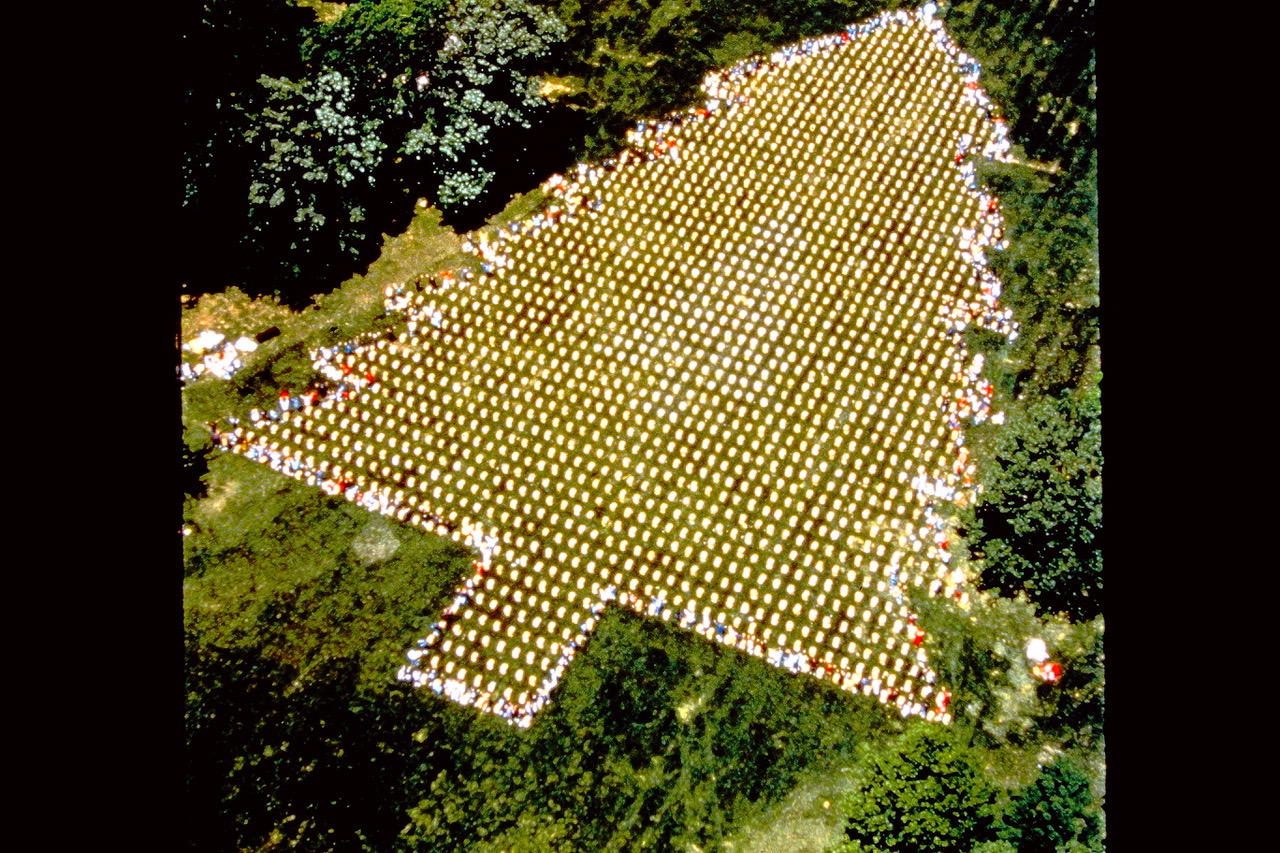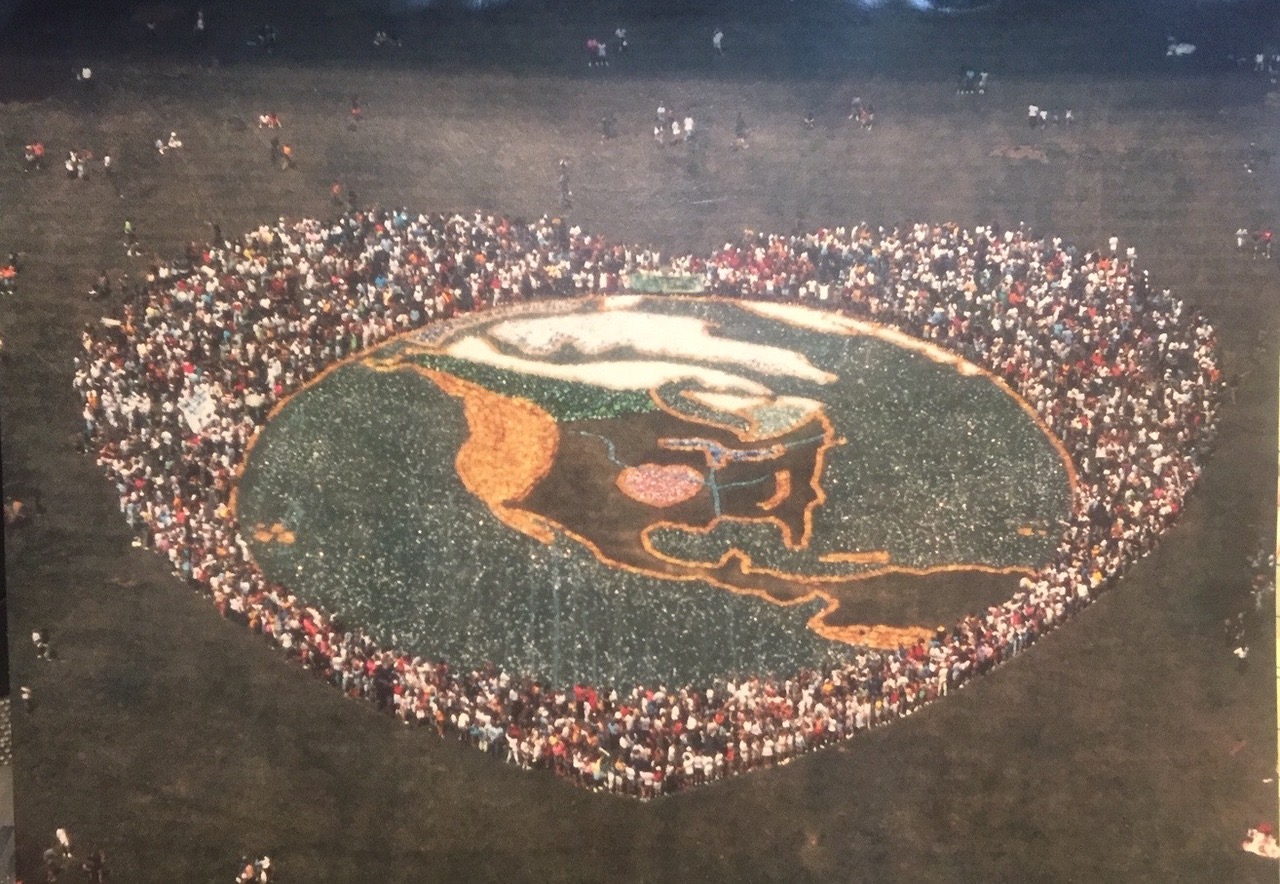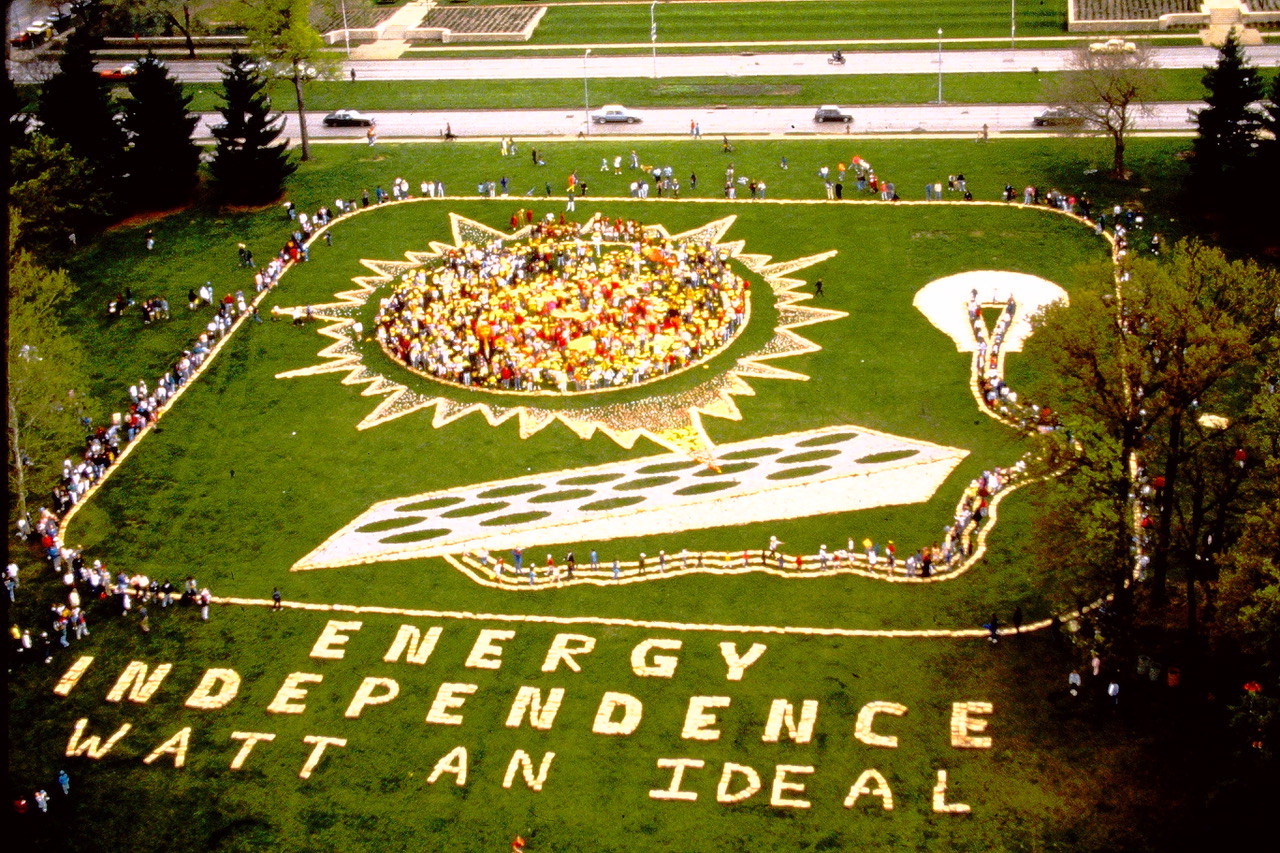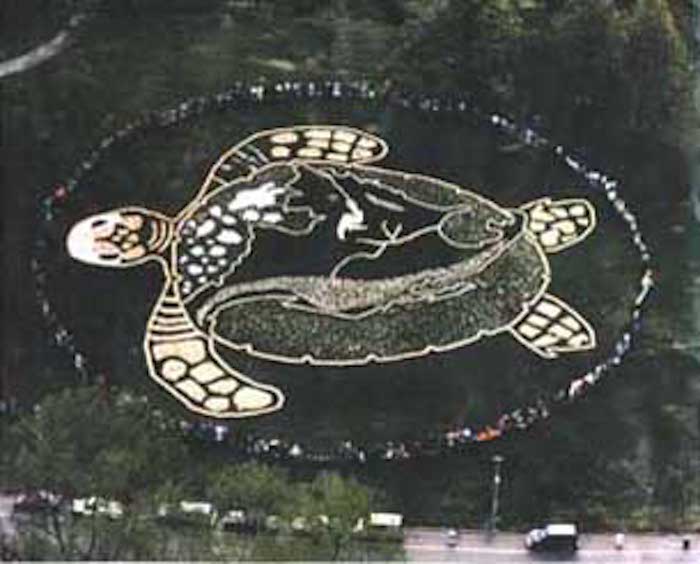A look back at early Earth Day activism in Kansas City
Every April since 1970, people around the world have been celebrating Earth Day with parades, festivals, and events to raise awareness for environmental issues and to teach future generations to protect our planet.
From organizing for the inaugural event on April 22, 1970, to the community sculpture events in the early nineties, Kansas City has its own history of Earth Day events.
Here’s a look back at Earth Day events that began in 1989 led by local organization, Heartland All Species Project.
The events combined art and science to raise awareness about ecological issues, and gathered thousands of Kansas Citians in celebration, costume, and activism.
Each event featured a massive community sculpture that repurposed waste to tell a story. Here are photos of those sculptures that were taken over 30 years ago during the month of April. Event organizers Marty Kraft and Stan Slaughter reflect on these impressive community gatherings.
Phantom Forest Sculpture – 1989

The 1989 sculpture raised awareness about trees. At this time, there was no curbside paper recycling in the city and newspapers did not use recycled paper content. They calculated how many 30-year pine trees were needed to produce one issue of the Kansas City Star’s Sunday newspaper, and planned to recreate a forest of the estimated 1,800 trees as the Phantom Forest sculpture. They worked with a survey company to arrange the 1,800 dots in the form of a 430-foot long, 180-foot wide pine tree.
The sculpture was made with newspapers packaged in brown paper sacks that were gathered by community members and local organizations. Volunteers assembled the tree at Theis Park (then Volker Park) over two days. The All Species Parade gathered on a Saturday morning to celebrate the sculpture.
This sculpture project had a big impact on Kraft.
“It took so many people to bring their newspapers to build the sculpture,” Kraft said. “The confusion and necessity to join together to solve the problems, community formed.”
At the end of the event, they were able to sell the 150,000 pounds of newspaper used during the event. The paper was recycled and used for insulation. The proceeds were donated to preserve and expand a cloud forest preserve in Costa Rica. The project was awarded recognition from the U.N. Environmental Project.
Heart of the Heartland Sculpture – 1990

1990 marked the 20th anniversary of Earth Day, and it was a widely celebrated global event. In Kansas City, the Heartland All Species Project organized the Heart of the Heartland Earth 150-foot diameter sculpture.
A coalition of community groups constructed the sculpture. It was made with newspapers in grocery bags for the outlines and the Rocky Mountains, red Coke cans for the heart, blue laundry detergent bottles for the rivers and lakes, milk jugs for the arctic snow, and blue mesh with aluminum cans for the ocean.
The sculpture was built on a Friday, and the All Species Parade was held on Saturday with 3,000 people parading through the Country Club Plaza in costume. The organizers opened an arts studio in the Crossroads for volunteers to create masks and costumes months before the event.
“People were charged to walk a mile in your favorite animal’s shoes,” Slaughter said. “Some schools came to the parade as an ecosystem. For example, an entire class came as a coral reef. We had a drum band lead the parade and the spirit was exulting.”
The parade concluded in the heart space around the globe, showing love for the earth.
Energy Independence Sculpture – 1991

The 1991 sculpture reflected on the Gulf War, and the discussions about crude oil and energy independence. The Energy Independence sculpture celebrated energy from the sun by recreating a solar collector.
During the celebration, people in costume stood in the sun holding red and yellow paper signs, and also ran through the solar collector wires creating the energy that powered the system.
The event featured a parade and a giant puppet play titled, “We’re off to see the lizard” about how the answers to our problems can be found in nature.
The organizers were inspired to use puppets after witnessing the excitement of other puppet theaters and events in the U.S.
“They instilled awe and awe can open a closed person to something different,” Kraft said. “Something better can be formed in this openness and the support of community can help it persist.”
Turtle Island Sculpture – 1992

1992 marked the 500th anniversary of Christopher Columbus’ arrival in North America. The Turtle Island sculpture and a puppet play highlighted “The World on the Turtle’s Back,” the creation story of the Haudenosaunee Confederacy people.
The Heartland All Species Project produced an even bigger puppet play for this event with five 15-foot tall puppets and a cast of 140 volunteer puppeteers.
In reflecting on the committed volunteers, Kraft remarked that joy and passion was their main energy.
“We had a team of people who really got it. They were passionate about shifting our culture that they put in the time. It wasn’t a sacrifice. It was a joyful endeavor.”
Reflecting on their activism
These volunteer-led events ended, but the organizers are still environmental educators today.
“Be the change. We’re the ones we’ve been waiting for,” Slaughter said. “Some tremendous actions and progress happened because people stepped up. We are the best we have and it’s enough.”
Photos used with permission from Marty Kraft and Stan Slaughter.





This is a fantastic story! Kudos to KC for doing great things in sustainability!